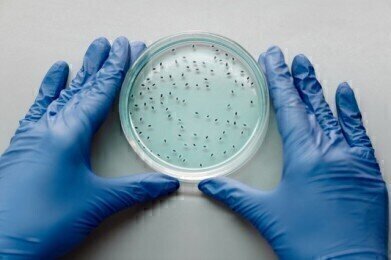Laboratory Products
What Does Hazard Containment Mean?
Apr 18 2021
Most laboratories are considered safe and responsible workplaces, though to maintain these standards it’s critical to have rigorous hazard containment strategies in place. What does this mean? Read on as we explore the definition of hazard containment, why it matters and how laboratories manage the risks.
Defining hazard containment
Hazard containment is an umbrella term that refers to the responsible handling and disposal of dangerous materials and substances. Hazards can describe anything from a vial of a corrosive chemical such as sulfuric acid or hydrogen peroxide, to a sample of a highly infectious virus such as SARS-CoV-2 or Ebola. Hazard containment guidelines dictate not only how contaminated materials are handles within the laboratory, but also how they’re disposed of or destroyed.
What classifies as a harazdous material?
The definitions of hazardous material can be broad and will often vary between countries, states and organisations. For example, in the Unites States organisations such as the Occupational Safety and Health Administration (OSHA), the Environmental Protection Agency (EPA) and the Centres for Disease Control and Prevention (CDC) outline what constitutes as a hazardous material. Generally, if a material has been issued a Safety Data Sheet (SDS) or if it poses a threat to the health of human beings or the environment, it’s considered hazardous and is subject to strict containment protocols.
Developing laboratory-specific guidelines
As well as adhering to national regulations, most laboratories produce their own specific guidelines and protocols to aid in hazard containment. For example, the Health and Safety Department at the University of Edinburgh has a developed a clear and concise guide covering hazardous substances. In New Zealand, the University of Auckland has similar guidelines concerning biological risk management and containment standards. Both play an important role in keeping laboratory personnel safe and preventing pathogens from contaminating samples and spreading into the wider community.
Containing hazards and sterilising equipment
In laboratories, Bio Safety Cabinets (BSCs) are one of the most effective laboratory products for containing hazards. They’re purpose built with biosafety in mind and offer researchers an enclosed and ventilated workspace to safely handle infectious agents and pathogen-contaminated materials. Not only do BSCs protect research personnel from these hazards, but they ensure pathogens can’t contaminate other samples in the laboratory or be released into the outside world.
Direct exposure to contaminated materials means laboratory teams must adhere to strict protocols when sterilising BSCs. VÍctor Lázaro, a representative from Azbil Telstar Technologies S.L.U, explores the BSC sterilisation process further in ‘Decontamination Methods for Bio Safety Cabinets.’
Digital Edition
Lab Asia 31.2 April 2024
April 2024
In This Edition Chromatography Articles - Approaches to troubleshooting an SPE method for the analysis of oligonucleotides (pt i) - High-precision liquid flow processes demand full fluidic c...
View all digital editions
Events
Apr 28 2024 Montreal, Quebec, Canada
May 05 2024 Seville, Spain
InformEx Zone at CPhl North America
May 07 2024 Pennsylvania, PA, USA
May 14 2024 Oklahoma City, OK, USA
May 15 2024 Birmingham, UK


.jpg)















